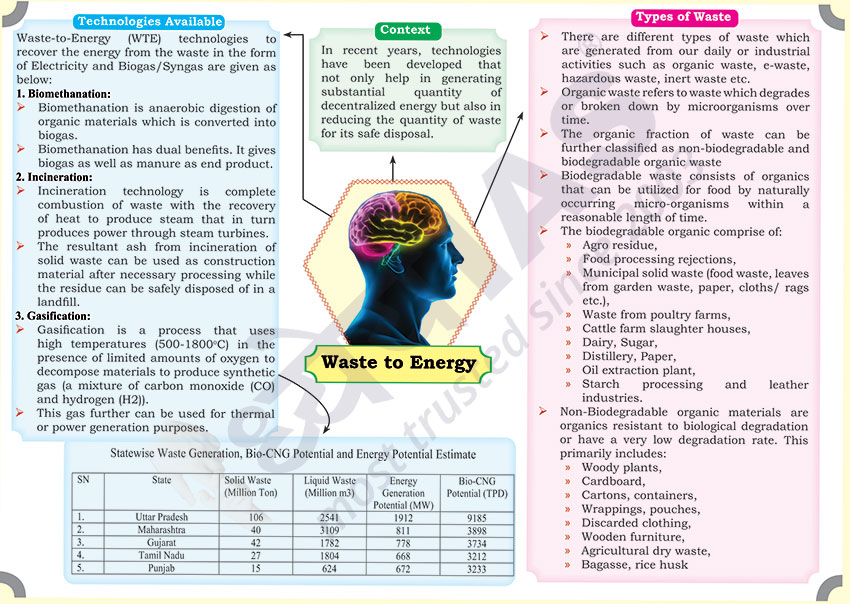Context
- In recent years, technologies have been developed that not only help in generating substantial quantity of decentralized energy but also in reducing the quantity of waste for its safe disposal.
Types of Waste
- There are different types of waste which are generated from our daily or industrial activities such as organic waste, e-waste, hazardous waste, inert waste etc.
- Organic waste refers to waste which degrades or broken down by microorganisms over time.
- The organic fraction of waste can be further classified as non-biodegradable and biodegradable organic waste
- Biodegradable waste consists of organics that can be utilized for food by naturally occurring micro-organisms within a reasonable length of time.
- The biodegradable organic comprise of:
- Agro residue,
- Food processing rejections,
- Municipal solid waste (food waste, leaves from garden waste, paper, cloths/ rags etc.),
- Waste from poultry farms,
- Cattle farm slaughter houses,
- Dairy, Sugar,
- Distillery, Paper,
- Oil extraction plant,
- Starch processing and leather industries.
- Non-Biodegradable organic materials are organics resistant to biological degradation or have a very low degradation rate. This primarily includes:
- Woody plants,
- Cardboard,
- Cartons, containers,
- Wrappings, pouches,
- Discarded clothing,
- Wooden furniture,
- Agricultural dry waste,
- Bagasse, rice husk
Technologies Available
Waste-to-Energy (WTE) technologies to recover the energy from the waste in the form of Electricity and Biogas/Syngas are given as below:
1. Biomethanation:
- Biomethanation is anaerobic digestion of organic materials which is converted into biogas.
- Biomethanation has dual benefits. It gives biogas as well as manure as end product.
2. Incineration:
- Incineration technology is complete combustion of waste with the recovery of heat to produce steam that in turn produces power through steam turbines.
- The resultant ash from incineration of solid waste can be used as construction material after necessary processing while the residue can be safely disposed of in a landfill.
3. Gasification:
- Gasification is a process that uses high temperatures (500-1800oC) in the presence of limited amounts of oxygen to decompose materials to produce synthetic gas (a mixture of carbon monoxide (CO) and hydrogen (H2).
- This gas further can be used for thermal or power generation purposes.
Statewise Waste Generation, Bio-CNG Potential and Energy Potential Estimate









